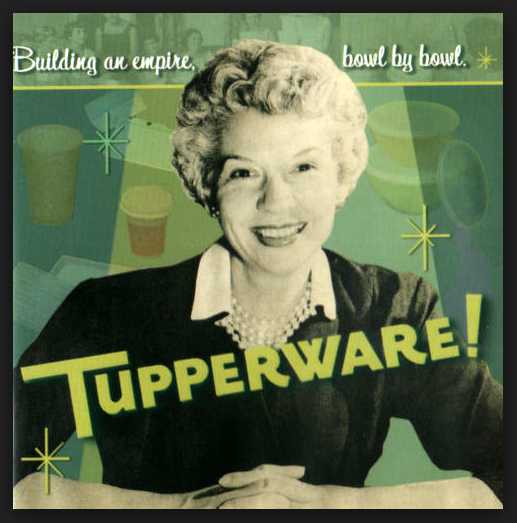Earl Tupper invented Tupperware but he had a hard time selling it. People didn’t trust plastic, and they didn’t know how to use the product he developed to store items in air-tight containers. His sales for his first six years was essentially flat. Moreover, he was an introvert and could not manage a sales force like many other inventors.
Enter Miss Brownie Wise. She said that the only way to sell a product like Tupperware was through demonstrations, and the Tupperware party was born. Brownie was a struggling divorcee raising a sick child as a single mom. Her first attempt to sell Tupperware at a party was an utter disaster. She was so nervous she became physically nauseated during the presentation and tripped over her own display, hitting her face on the floor. She was forced to leave the house with a bloody nose; absolutely the worst nightmare you could imagine. Her next few parties were not much better.
However, even though her son was in the hospital she persevered and continued to give Tupperware parties. Earlier Brownie had taken a Dale Carnegie course. She knew that she just had to keep at it and just like Dale’s experience told her, it would one day lead to success. Eventually, she got better and was soon selling two truckloads of product a week as an independent dealer.
Earl Tupper was so impressed with her success that he knew he had to hire her to build his sales force. Brownie remembered her rocky start and never judged a book by its cover. She gave everyone a chance to be a Tupperware salesperson and ruled no one out. She knew that if you build people up they will help you build your business. Everyone was a customer to Brownie. Once a gas station attendant saw her product in the back of her car. Before she left the filling station she had arranged to have his wife host a Tupperware party.
Wise knew that to be successful you also had to be goal oriented. Her first goal was to buy a house. To reinforce this goal she cut out a picture of a house like the one she coveted and hung it on the wall where she could see it every day. She believed you have to plan for small victories every day and monitor your progress toward your goal.
If you can’t see your progress, many people become impatient. They simply abandon their goals. You have to create a chart and plot your progress so you can keep focused on your goal. In 1951 there were 200 Tupperware dealers. By 1954, a mere three years later, there were 9,000 dealers. The deck was stacked against Brownie from the start but she persevered and became a huge success.
How can you internalize the lessons from Brownie Wise and implement them in your business?









